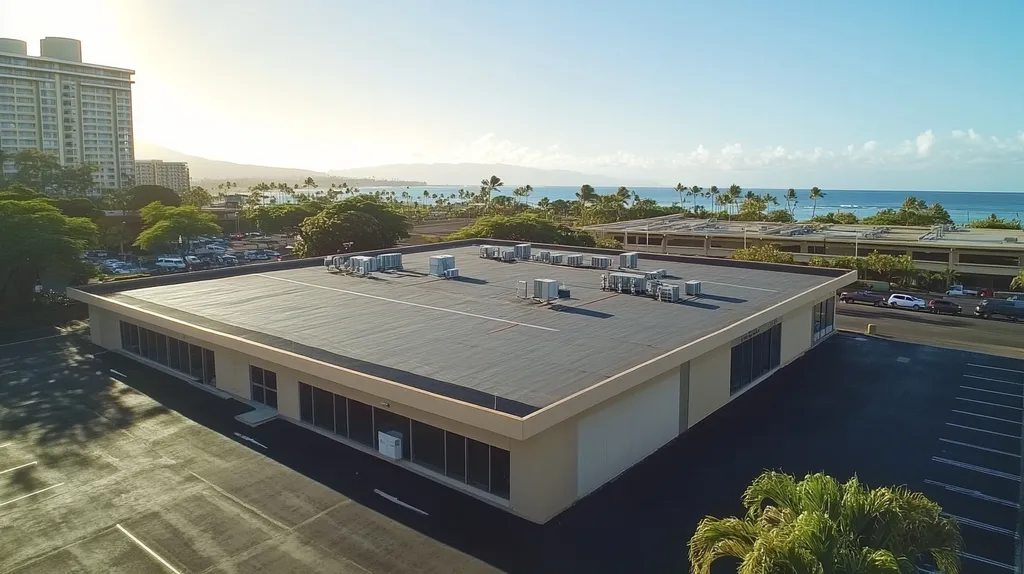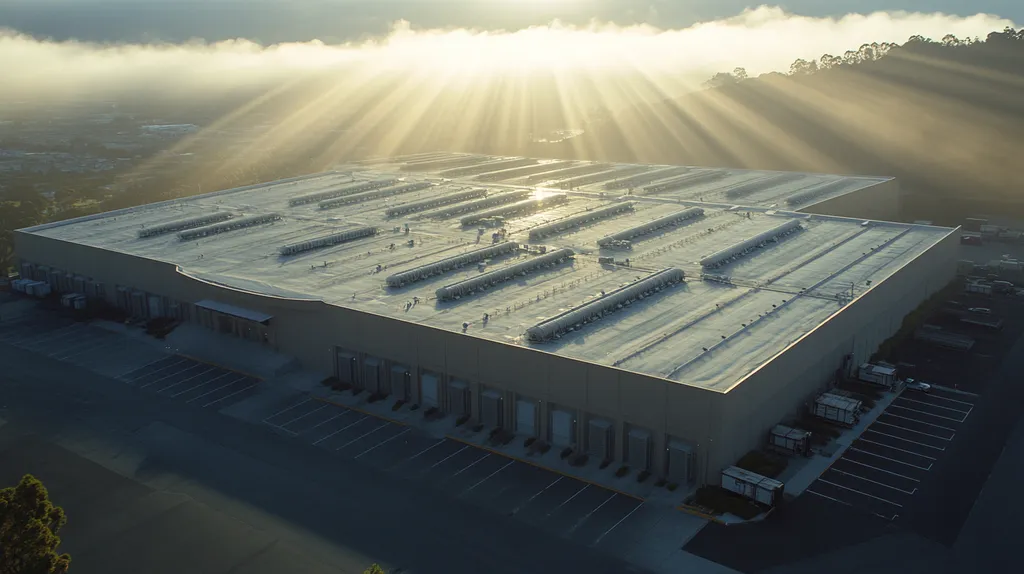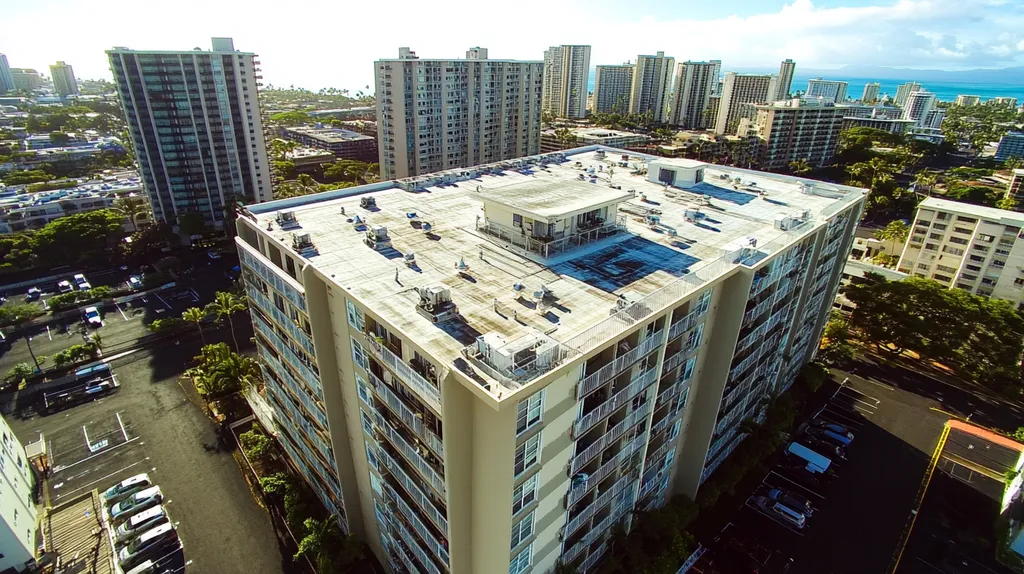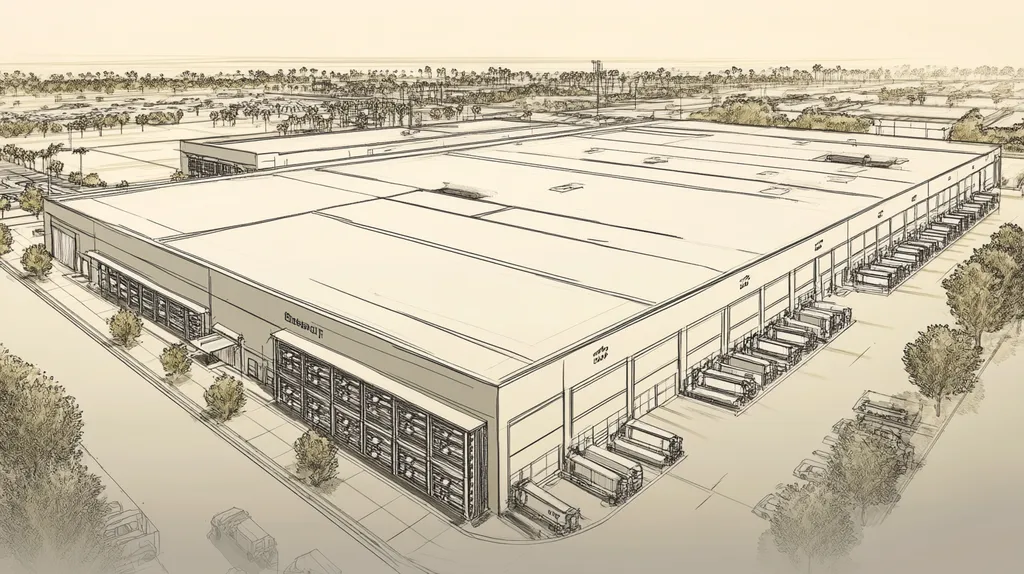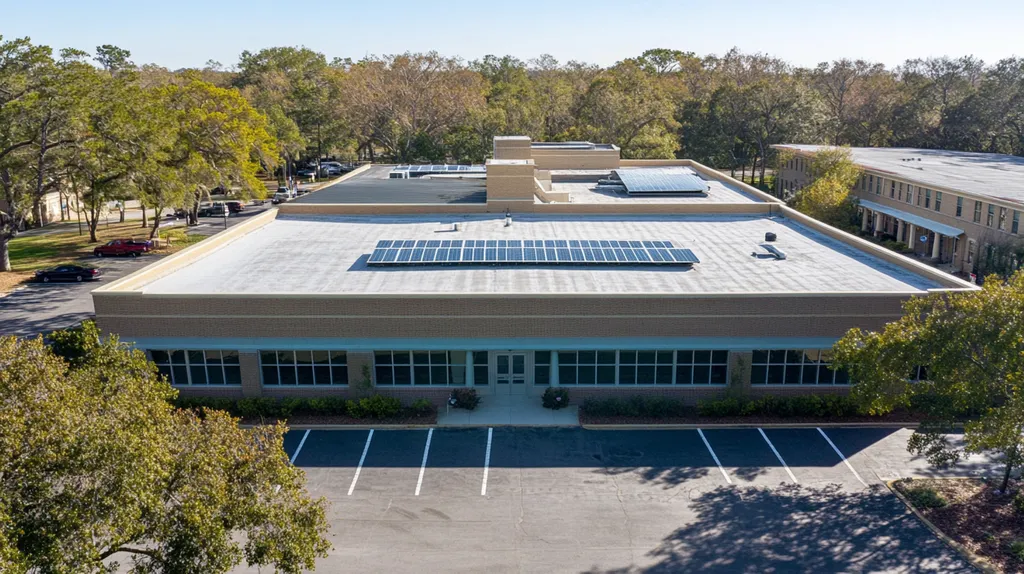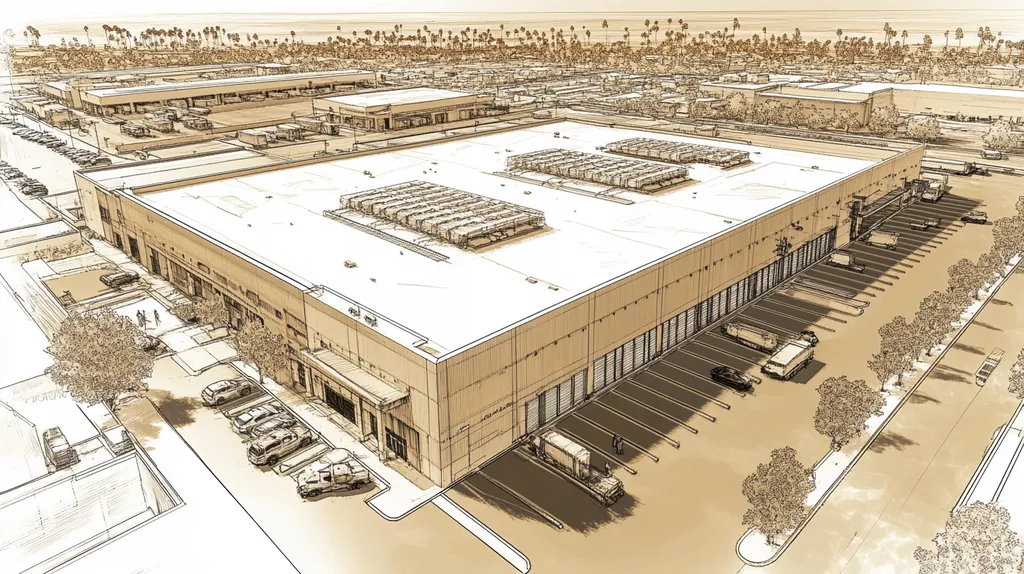In industrial roofing, penetrations represent the most vulnerable points of failure, with studies showing they account for over 60% of all catastrophic roof leaks and structural damage. These critical openings, from HVAC units to plumbing vents, create necessary pathways for building systems but introduce significant risks when improperly detailed or maintained.
The financial impact of penetration failures can be devastating, often resulting in hundreds of thousands in damage to equipment, inventory, and operations. Understanding proper penetration design, installation, and maintenance has become essential as industrial facilities grow increasingly complex.
This comprehensive guide examines the crucial aspects of roof penetrations, from fundamental concepts through optimization strategies, providing facility managers with actionable insights for protecting their roofing investments.
SECTION 1: FUNDAMENTAL CONCEPTS
Roof penetrations represent the most vulnerable points in any industrial roofing system, with industry data showing they account for up to 60% of all roof failures. These critical openings serve essential functions but require meticulous attention to detail during installation and maintenance. Understanding how penetrations affect roof performance is fundamental to protecting valuable assets and preventing costly water damage that can cascade through a facility.
Defining Roof Penetrations and Their Functions
Roof penetrations encompass any deliberate opening made through the roofing membrane and underlying structure. Common types include HVAC units, plumbing vents, electrical conduits, gas lines, and structural supports for rooftop equipment.
These openings serve as crucial pathways for building systems that maintain operational efficiency. HVAC penetrations allow for temperature control, while plumbing vents ensure proper drainage system function and prevent dangerous gas buildups.
Each penetration type requires specific flashing methods and sealing techniques. The selection of appropriate materials depends on factors like membrane type, climate conditions, and the specific function of the penetration.
Regular evaluation of penetration conditions helps identify early signs of deterioration. This proactive approach prevents minor issues from escalating into major structural problems.
Impact of Penetrations on Roof Integrity
Every penetration creates a potential point of vulnerability in the roofing system. These openings interrupt the continuous waterproof barrier, making proper sealing essential for maintaining roof integrity.
Thermal movement around penetrations can cause significant stress on flashing and sealants. Daily temperature fluctuations create expansion and contraction that may compromise even properly installed penetration details over time.
Water infiltration through compromised penetrations can damage insulation, reducing its R-value and increasing energy costs. The resulting moisture can also accelerate the deterioration of structural components and create conditions for mold growth.
Strategic placement and proper spacing of penetrations help distribute stress loads effectively. This planning phase is crucial for long-term roof performance and maintenance accessibility.
Regulatory and Code Compliance Considerations
Building codes establish strict requirements for penetration installation and maintenance. The International Building Code specifies that fasteners must penetrate at least 3/4 inch into roof sheathing to ensure structural integrity. (source: International Building Code 2018)
Compliance requirements vary by jurisdiction and roof type. Local amendments to building codes may impose additional restrictions on penetration spacing, flashing methods, and material specifications.
Fire safety regulations dictate specific requirements for penetrations that pass through fire-rated assemblies. These penetrations must maintain the fire-resistance rating of the roof assembly through appropriate firestopping methods.
Documentation of penetration installations and modifications is essential for warranty protection. Maintaining detailed records helps demonstrate compliance during inspections and supports insurance claims when needed.
SECTION 2: SYSTEM COMPONENTS
Industrial roofing systems must maintain their integrity despite numerous penetrations that pierce their protective barrier. Each opening represents a potential point of failure that can compromise the entire structure. Understanding and properly managing these critical components is essential, as studies show that up to 70% of all roof leaks occur at penetrations and their associated flashings.
Types of Penetrations: Pipes, Vents, HVAC, and Skylights
Penetrations in industrial roofs serve diverse functions, from mechanical support to environmental control. Common types include plumbing stacks, exhaust vents, electrical conduits, and structural supports for equipment.
HVAC units represent some of the most challenging penetrations due to their size and complexity. These systems require careful coordination between mechanical and roofing contractors to ensure proper installation and long-term performance.
Skylights and roof hatches provide essential natural light and access but introduce significant waterproofing challenges. These larger penetrations often require specialized curb systems and enhanced flashing details.
Each penetration must maintain specific clearances from walls, curbs, and other roof elements. The University of Alabama at Birmingham Facilities Standards specify that penetrations must extend at least 12 inches above the finished roof surface and maintain 12-inch clearances from nearby obstructions. (source: University of Alabama at Birmingham Facilities Design and Construction Standards)
Flashing Systems and Waterproofing Materials
Flashing systems form the primary defense against water infiltration at penetration points. These critical components include base flashings, counter flashings, and specialized boots designed for specific penetration types.
Material selection must account for chemical compatibility, thermal movement, and expected service life. Common options include prefabricated metal flashings, flexible membrane boots, and liquid-applied flashings.
Proper termination of flashings is essential for long-term performance. This includes appropriate overlaps, mechanical fastening, and sealant application at all transitions.
Regular inspection of flashing systems helps identify early signs of deterioration or separation. Preventive maintenance of these components is far more cost-effective than addressing water damage after a failure.
Insulation and Air Barrier Interfaces Around Penetrations
Effective insulation around penetrations is crucial for maintaining thermal efficiency and preventing condensation. Gaps or compressions in insulation at these points can create significant heat loss and potential moisture problems.
Air barrier continuity must be maintained where penetrations interrupt the building envelope. This requires careful detailing and often supplemental materials to ensure an unbroken air seal.
Thermal bridging through penetrations can significantly impact building energy performance. Proper insulation techniques and thermal breaks help minimize these effects.
Movement and settlement of rooftop equipment can stress penetration details over time. Regular monitoring of these conditions helps prevent insulation displacement and maintain system integrity.
SECTION 3: IMPLEMENTATION METHODS
Proper implementation of roof penetrations stands as the cornerstone of industrial roofing integrity. Studies indicate that incorrectly installed penetrations can reduce a roof’s lifespan by up to 70% and lead to thousands in repair costs. Understanding and executing correct installation methods not only prevents costly failures but also ensures optimal building performance and energy efficiency.
Cutting and Preparing Roof Openings
The foundation of successful penetration installation begins with precise cutting and thorough preparation. Using appropriate cutting tools and techniques prevents membrane damage and maintains structural integrity around the opening.
Before cutting, contractors must carefully mark and measure penetration locations to ensure proper alignment with internal systems. This planning phase includes verifying structural support locations and maintaining required distances between penetrations.
Surface preparation involves removing all debris, contaminants, and irregular surfaces that could compromise seal integrity. Clean, smooth surfaces are essential for proper adhesion of flashings and sealants.
Proper support of the roofing membrane during cutting prevents unwanted tears or stretching. This includes using appropriate backing materials and maintaining consistent pressure throughout the cutting process.
Installation of Pre-fabricated and Field-fabricated Flashings
Installation must meet strict air and water infiltration requirements to ensure long-term performance. The Insurance Institute for Business & Home Safety (IBHS) emphasizes that proper mechanical fastening and positioning are crucial for maintaining flashing integrity under various weather conditions. (source: IBHS – Commercial Roofs Best Practices)
Pre-fabricated flashings offer consistency and reliability for standard penetrations. These components come with manufacturer warranties and specific installation guidelines that must be followed precisely.
Field-fabricated flashings require additional skill but provide solutions for non-standard penetrations. Careful attention to material selection and craftsmanship ensures these custom solutions match the performance of pre-fabricated options.
Both types require proper overlapping and mechanical attachment to prevent wind uplift and water infiltration. Regular inspection during installation helps identify and correct potential issues before they become problems.
Sealing Techniques to Prevent Water and Air Intrusion
Effective sealing represents the final defense against water and air infiltration. Modern sealant technologies offer superior adhesion and flexibility, accommodating building movement while maintaining watertight integrity.
Application techniques significantly impact sealant performance. Proper joint preparation, including appropriate backing materials and primer application, ensures optimal adhesion and longevity.
Temperature and weather conditions during installation affect sealant curing and performance. Contractors must carefully monitor conditions and adjust application methods accordingly.
Regular inspection and maintenance of sealed areas helps identify early signs of deterioration. Prompt attention to compromised seals prevents minor issues from escalating into major problems.
SECTION 4: MAINTENANCE REQUIREMENTS
Roof penetrations represent critical vulnerabilities in industrial roofing systems, with industry data showing that 90% of premature roof failures originate at these points. Without proper maintenance, even well-installed penetrations can deteriorate rapidly, leading to costly water damage and business disruption. Understanding and implementing rigorous maintenance protocols is essential for protecting your facility’s assets and maintaining operational continuity.
Regular Inspection Protocols for Penetration Integrity
Comprehensive inspection programs should include monthly visual checks of all roof penetrations, with detailed documentation of any observed changes. These regular assessments help identify potential issues before they escalate into major problems.
Key inspection points include examining flashing conditions, checking seal integrity, and looking for signs of material fatigue or separation. Special attention should focus on high-stress areas where thermal movement is most likely to cause damage.
The Building America Solution Center emphasizes that thorough inspection of roofing membranes and structural components must precede any repair work, ensuring comprehensive problem identification. (source: Building America Solution Center)
Professional infrared moisture surveys should be conducted annually to detect hidden water infiltration beneath the membrane. Early detection through these advanced techniques can prevent extensive damage to insulation and deck materials.
Common Repair Methods for Flashing and Sealant Failures
Immediate repair of compromised flashings and sealants is crucial for maintaining roof integrity. Small issues can quickly escalate, especially during severe weather events.
Standard repair procedures include cleaning the affected area, removing damaged materials, and installing new compatible components. Proper surface preparation ensures optimal adhesion of repair materials.
Modern repair systems often utilize flexible membrane collars and self-adhering materials that accommodate building movement while maintaining watertight conditions. These solutions offer superior longevity compared to traditional repair methods.
Quality control measures during repairs should include adhesion testing and proper cure time verification. These steps help ensure repair durability and prevent callback issues.
Impact of Weather and Environmental Conditions on Penetrations
Environmental factors significantly influence penetration performance and maintenance requirements. UV exposure, temperature fluctuations, and precipitation patterns all affect material degradation rates.
Seasonal maintenance adjustments should account for specific regional weather challenges. Winter preparations might include additional sealant applications, while summer maintenance focuses on UV protection.
Chemical exposure from industrial processes or air pollution can accelerate deterioration of penetration components. Regular cleaning and protective coating applications help mitigate these impacts.
Wind-driven rain and snow create unique challenges for penetration maintenance. Enhanced inspection frequency during severe weather seasons helps prevent weather-related failures.
SECTION 5: PERFORMANCE METRICS
The performance of industrial roofing systems hinges critically on how well their penetrations function over time. Recent studies show that poorly performing penetrations can reduce overall roof lifespan by up to 40% while increasing energy costs by 25-30%. Understanding and measuring key performance metrics around penetrations is essential for protecting substantial facility investments and maintaining operational efficiency.
Leak Resistance and Water Tightness Testing
Roof penetration assemblies must meet rigorous air and water infiltration requirements through standardized testing protocols. The Insurance Institute for Business & Home Safety (IBHS) emphasizes that penetration testing should comply with ASTM E330 and ASTM E331 standards to ensure proper performance under various weather conditions. (source: IBHS Commercial Roofs Best Practices)
Electronic leak detection methods like low-voltage testing can pinpoint vulnerabilities in penetration flashings before water infiltration occurs. This non-destructive approach allows facility managers to address potential issues while repairs remain simple and cost-effective.
Flood testing remains the gold standard for evaluating penetration water-tightness on low-slope roofs. This method involves temporarily damming roof sections and maintaining a consistent water level to identify any breaches in the system.
Regular performance testing should be documented and tracked over time to identify trends and predict potential failures. This data-driven approach enables proactive maintenance planning and helps extend the serviceable life of penetration components.
Thermal Bridging and Energy Efficiency Assessments
Thermal imaging surveys provide precise measurements of heat loss through roof penetrations. These assessments can detect insulation gaps, moisture infiltration, and other efficiency-reducing conditions that may not be visible during routine inspections.
Energy modeling software can quantify the impact of penetration-related thermal bridging on facility operating costs. This analysis helps justify investments in improved insulation and flashing systems by demonstrating concrete financial returns.
Air pressure testing around penetrations reveals gaps in the air barrier system that can significantly impact HVAC efficiency. Addressing these leakage points can reduce energy consumption by 10-15% in many facilities.
Regular monitoring of internal temperature variations near roof penetrations helps identify developing efficiency issues. Early detection of thermal anomalies enables corrective action before energy costs spike dramatically.
Structural Load and Support Evaluations for Penetrations
Load capacity assessments must account for both dead loads from permanent equipment and live loads from maintenance activities around penetrations. These calculations ensure the roof structure can safely support all anticipated forces without compromising integrity.
Deflection monitoring around large penetrations helps verify that support systems are performing as designed. Even minor settling or movement can stress flashings and compromise waterproofing if left unchecked.
Vibration analysis of equipment mounted through roof penetrations can reveal potential structural concerns. Excessive vibration accelerates component wear and may indicate the need for additional support or isolation measures.
Regular evaluation of penetration support systems should include inspection of fasteners, brackets, and curbs for signs of fatigue or corrosion. These critical components require periodic maintenance to maintain their load-bearing capacity.
SECTION 6: OPTIMIZATION STRATEGIES
Industrial roofing systems demand strategic optimization of penetrations to prevent catastrophic failures. Studies show that unoptimized penetrations can reduce roof lifespan by up to 40% while increasing maintenance costs by 300%. Modern optimization strategies focus on three critical areas: material selection, installation practices, and system integration. By implementing these strategies effectively, facility managers can dramatically extend roof life and reduce operational expenses.
Use of High-Performance Materials and Accessories
Modern roofing materials offer unprecedented durability and performance for penetration applications. Advanced polymer-based flashings provide superior flexibility and UV resistance compared to traditional materials, extending service life by up to 15 years.
Pre-fabricated penetration accessories eliminate many common installation variables that lead to failures. These engineered solutions include integrated moisture barriers and thermal breaks that significantly reduce common failure points.
Smart material selection must consider chemical compatibility between components. Modern TPO and PVC membranes require specific accessories designed to maintain their molecular bond over decades of exposure.
Performance monitoring of installed materials helps validate manufacturer claims and optimize future selections. Regular assessment of material degradation patterns enables data-driven decisions for replacement cycles.
Best Practices for Minimizing Air and Moisture Infiltration
Proper penetration planning during initial design phases dramatically improves long-term performance. Working with professional roofers who understand unique flashing requirements for different roof types ensures proper integration and reduces leak potential. (source: Maxwell Roofing)
Multi-layer defense strategies incorporate primary and secondary moisture barriers. This redundant protection approach prevents single-point failures from compromising the entire system.
Strategic placement of penetrations away from drainage paths and potential ponding areas reduces exposure to standing water. Proper spacing also facilitates maintenance access and reduces wear from foot traffic.
Advanced sealing techniques utilize compression gaskets and expanding foam technologies. These methods create dynamic seals that maintain effectiveness despite building movement and thermal cycling.
Coordination with Building Systems for Long-Term Durability
Integration of roofing and mechanical systems requires careful coordination during design and installation. Early planning prevents conflicts between structural supports, equipment placement, and drainage patterns.
Vibration isolation systems protect penetration seals from equipment movement. Proper dampening prevents premature wear while maintaining watertight conditions around dynamic components.
Strategic routing of utilities through combined penetration points reduces total roof openings. This consolidation simplifies maintenance while decreasing potential failure points.
Regular communication between facility maintenance teams ensures coordinated servicing of penetration-related systems. This collaborative approach helps identify and address potential issues before they escalate into failures.
The Bottom Line
With penetrations contributing to over 60% of catastrophic roof failures and billions in annual damage across industrial facilities, proper penetration management has become mission-critical for facility operations.
The latest industry data shows that facilities implementing comprehensive penetration protocols reduce failure rates by 85% while extending roof life by up to 40%.
Success requires an integrated approach spanning material selection, installation precision, and systematic maintenance – supported by regular performance monitoring and optimization.
As industrial roofing systems grow more complex, facility managers who master penetration best practices protect not just their roofing assets, but their entire operation’s continuity and bottom line.
The choice is clear: proactively manage penetrations or risk devastating structural and operational consequences.
FREQUENTLY ASKED QUESTIONS
Q. How do penetrations impact industrial roof performance?
A. Penetrations can create vulnerabilities in the roofing system, leading to potential leaks or structural issues. They disrupt the continuous waterproof barrier, making proper sealing and regular maintenance essential to prevent damage and ensure roof longevity.
Q. What types of penetrations are common in commercial roofs?
A. Common penetration types include HVAC units, plumbing vents, electrical conduits, and rooftop skylights. Each type serves critical functions but also introduces distinct waterproofing challenges that must be addressed during installation.
Q. How can I ensure proper installation of penetrations in my industrial roof?
A. Proper installation requires precise cutting, surface preparation, and secure sealing techniques. Using the correct flashing systems and ensuring all components work together is crucial to prevent leaks and maintain overall roof integrity.
Q. What maintenance is needed for penetrations in commercial roofs?
A. Regular inspections should check for flashing conditions, seal integrity, and material fatigue. Prompt repairs of any identified issues are vital to prevent minor problems from escalating into costly water damage or structural failures.
Q. How do I assess the performance of roof penetrations?
A. Performance can be evaluated through leak resistance testing, thermal imaging surveys, and monitoring air pressure. These assessments help identify potential failures and guide proactive maintenance efforts, ensuring long-term roof performance.
Q. What are the benefits of optimizing roof penetrations?
A. Optimizing roof penetrations can enhance durability, reduce maintenance costs, and extend the roof’s lifespan. Effective strategies involve using high-performance materials and ensuring proper installation, which collectively prevents leaks and improves energy efficiency.
Q. What impact do environmental conditions have on roof penetrations?
A. Environmental factors like UV exposure, temperature changes, and precipitation accelerate material degradation. Regular maintenance and inspections should be adjusted based on weather patterns to mitigate potential damage and ensure longevity of the penetrations.

